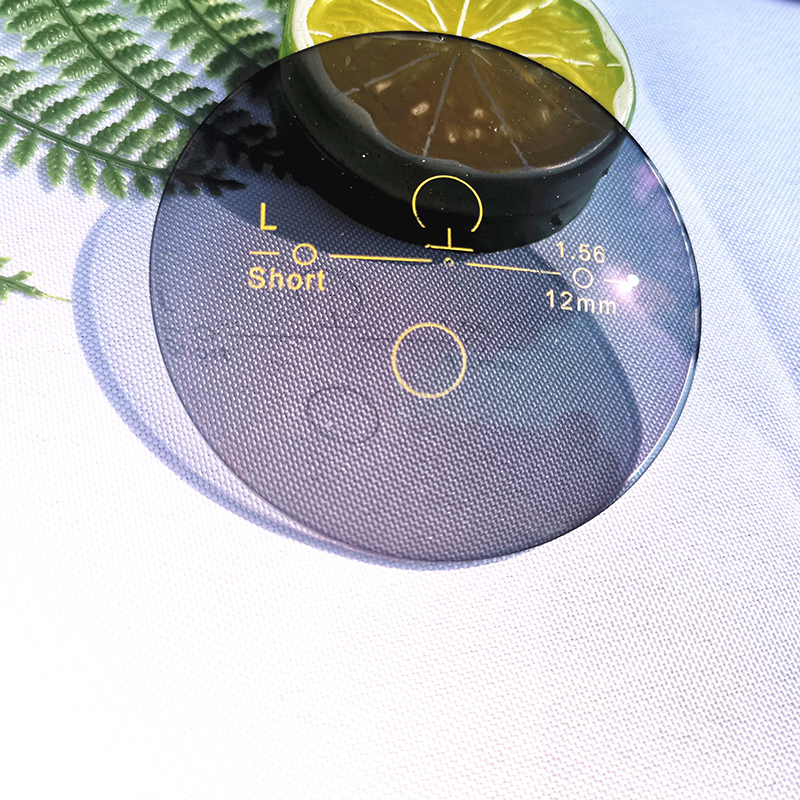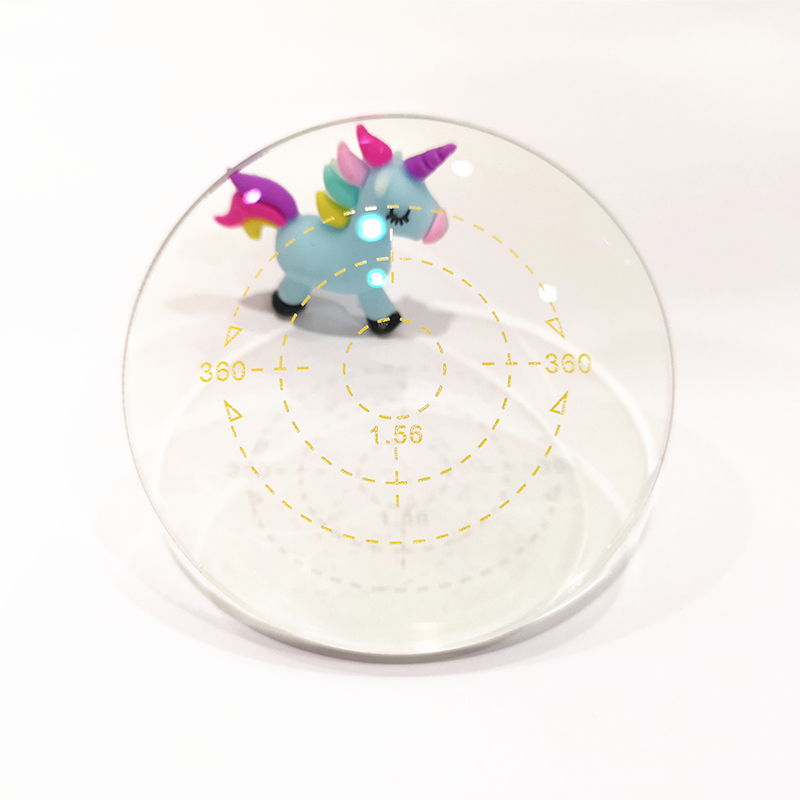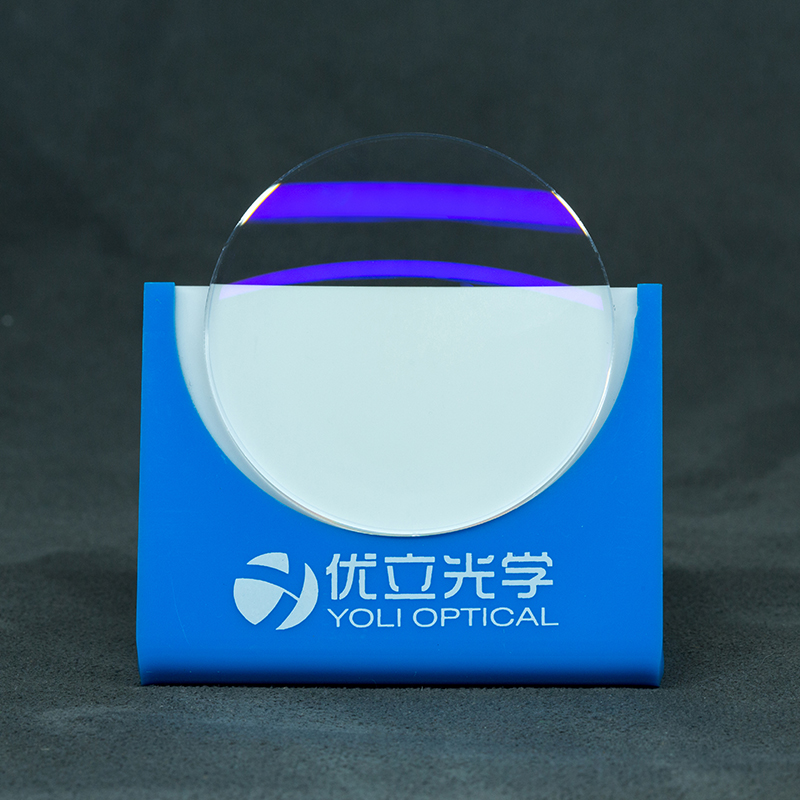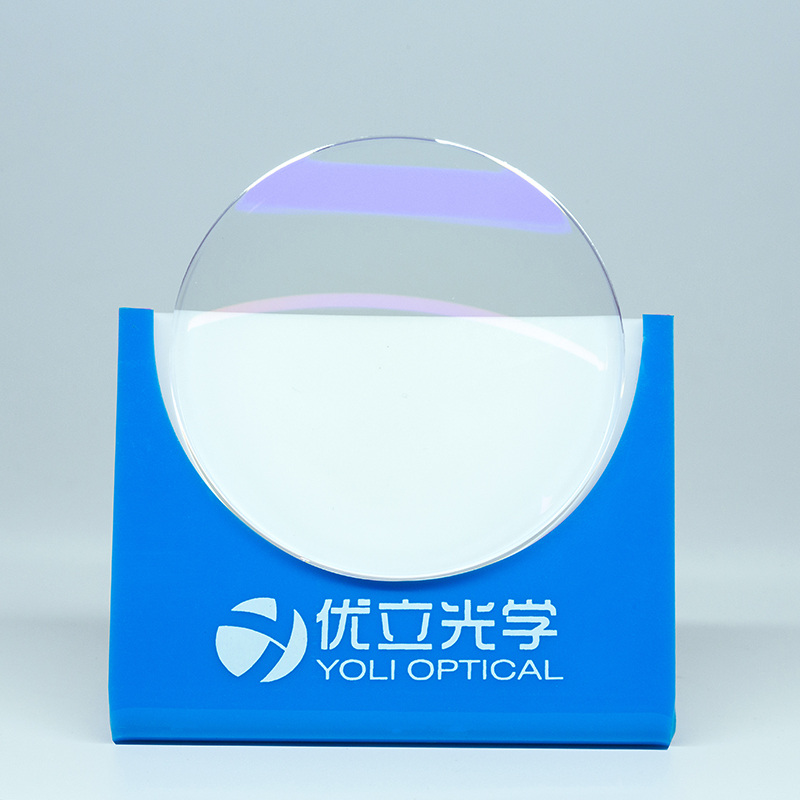
Wholesale Cr39 Blue Cut Lens Company – 1.60 MR-8 High Index Blue Light Reducing Lenses – YOLI
Wholesale Cr39 Blue Cut Lens Company – 1.60 MR-8 High Index Blue Light Reducing Lenses – YOLI Detail:
Refractive Index 1.60 MR-8™
The best balanced high index lens material with the largest share of refractive index 1.60 lens material market. MR-8 is suited to any strength ophthalmic lens and is a new standard in ophthalmic lens material.
Comparison of thickness of 1.60 MR-8 lens and 1.50 CR-39 lenses (-6.00D)

Abbe Number: A number that determinesthe viewing comfort of glasses
| MR-8 | Polycarbonate | Acrylic | CR-39 | Crown glass | |||||||||||
| Refractive index | 1.60 | 1.59 | 1.60 | 1.50 | 1.52 | ||||||||||
| Abbe number | 41 | 28~30 | 32 | 58 | 59 | ||||||||||
·Both high refractive index and high Abbe number provide optical performance similar to glass lenses.
·High Abbe number material such as MR-8 minimizes the prism effect (chromatic aberration) of lenses and provides comfortable use for all wearers.

What Is Blue Light?
Sunlight contains red, orange, yellow, green and blue light rays and many shades of each of these colors, depending on the energy and wavelength of the individual rays (also called electromagnetic radiation). Combined, this spectrum of colored light rays creates what we call “white light” or sunlight.
Without getting into complicated physics, there is an inverse relationship between the wavelength of light rays and the amount of energy they contain. Light rays that have relatively long wavelengths contain less energy, and those with short wavelengths have more energy.
Rays on the red end of the visible light spectrum have longer wavelengths and, therefore, less energy. Rays on the blue end of the spectrum have shorter wavelengths and more energy.
The electromagnetic rays just beyond the red end of the visible light spectrum are called infrared — they are warming, but invisible. (The “warming lamps” you see keeping food warm at your local eatery emit infrared radiation. But these lamps also emit visible red light so people know they are on! The same is true for other types of heat lamps.)
On the other end of the visible light spectrum, blue light rays with the shortest wavelengths (and highest energy) are sometimes called blue-violet or violet light. This is why the invisible electromagnetic rays just beyond the visible light spectrum are called ultraviolet (UV) radiation.

Key Points About Blue Light
1. Blue light is everywhere.
2. HEV light rays make the sky look blue.
3. The eye is not very good at blocking blue light.
4. Blue light exposure may increase the risk of macular degeneration.
5. Blue light contributes to digital eye strain.
6. Blue light protection may be even more important after cataract surgery.
7. Not all blue light is bad.

Be prepared with these correct blue filter lenses

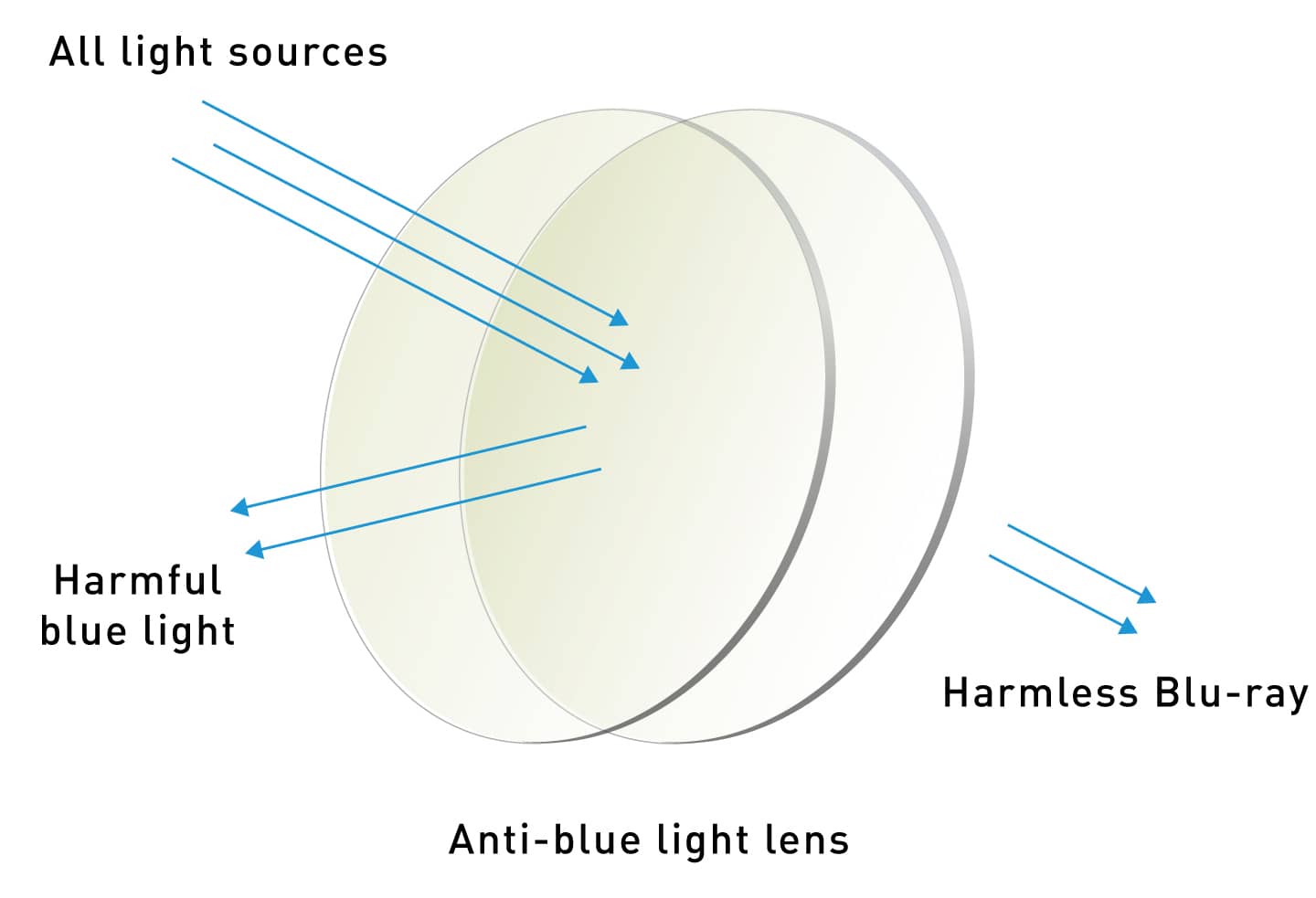
How Blue Light Reducing Lenses Can Help
Blue light reducing lenses are created using a patented pigment that is added directly to the lens before the casting process. That means the blue light reducing material is part of the entire lens material, not just a tint or coating. This patented process allows blue light reducing lenses to filter a higher amount of both blue light and UV light.
Product detail pictures:


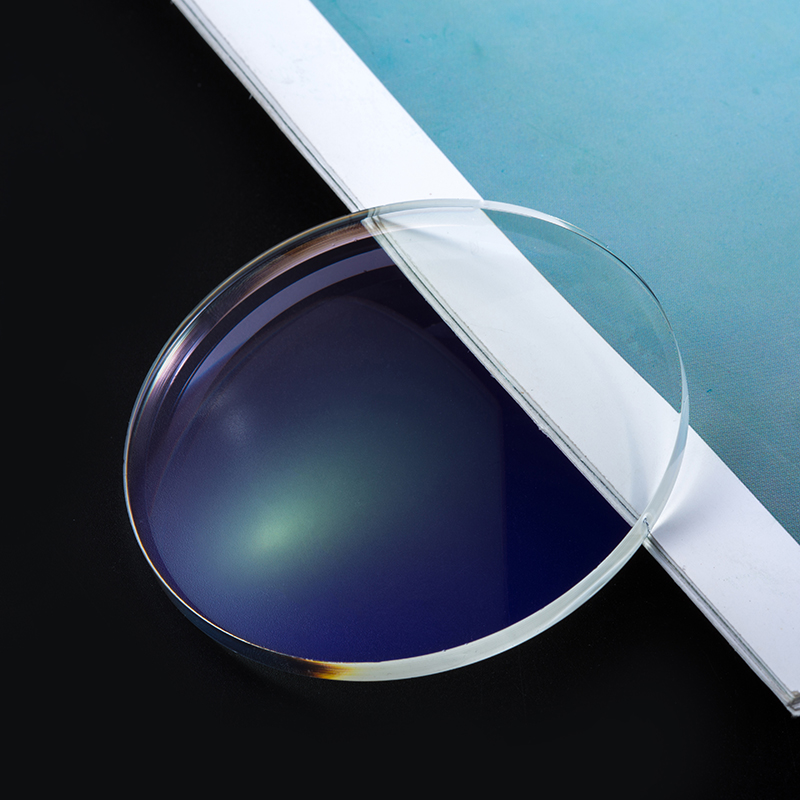
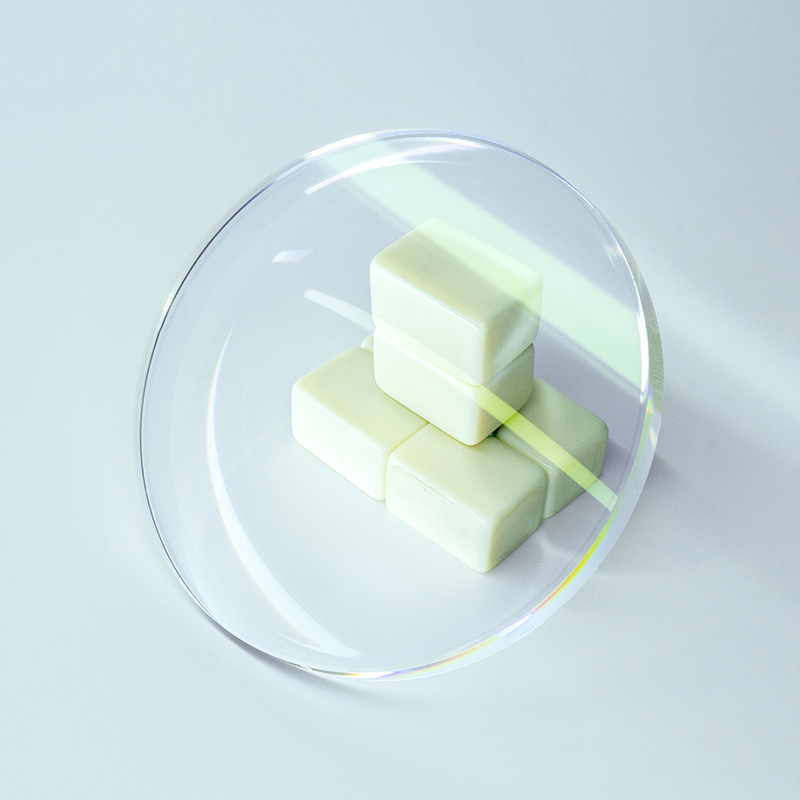
Related Product Guide:
To be able to give you benefit and enlarge our business, we also have inspectors in QC Team and assure you our greatest service and products for Wholesale Cr39 Blue Cut Lens Company – 1.60 MR-8 High Index Blue Light Reducing Lenses – YOLI , The product will supply to all over the world, such as: America, Botswana, Burundi, Thus far, our item associated with printer dtg a4 may be shown in most foreign nations as well as urban centers, which are sought after simply by targeted traffic. We all highly imagine that now we have the full capacity to present you with contented merchandise. Desire to collect requests of your stuff and produce the long-term co-operation partnership. We very seriously promise:Csame top quality, better price; exact same selling price, higher quality.
A good manufacturers, we have cooperated twice, good quality and good service attitude.

